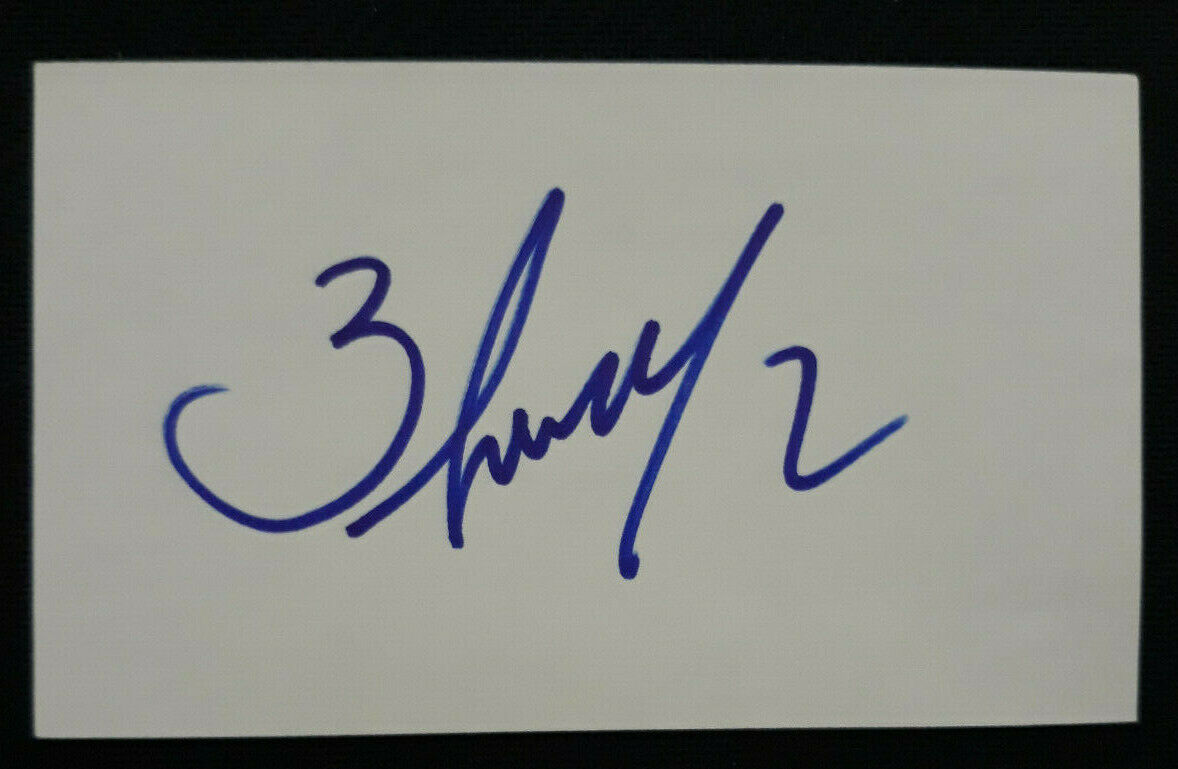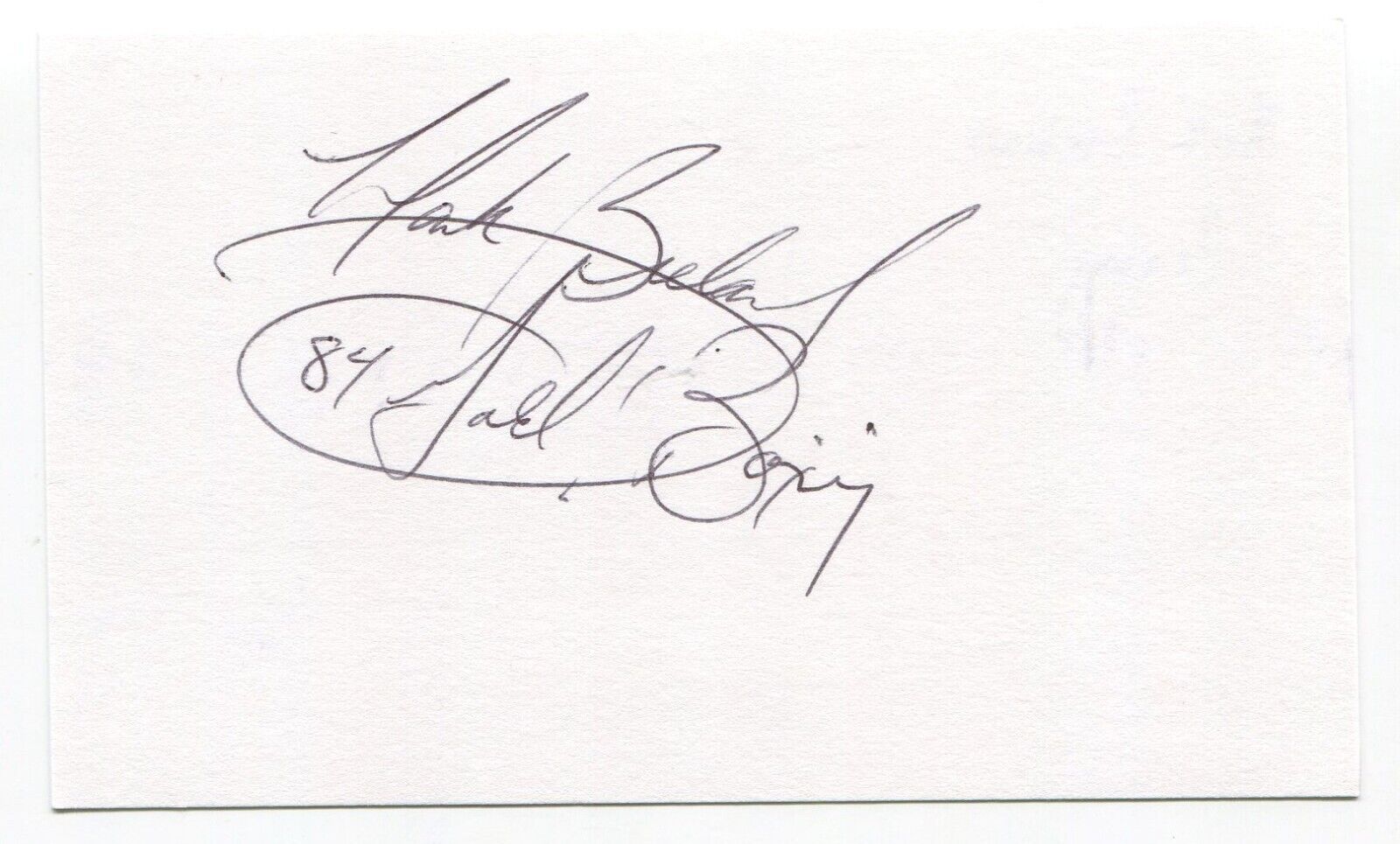-40%
"The Great White Hope" Gerry Cooney Hand Signed 3X5 Card Todd Mueller COA
$ 7.38
- Description
- Size Guide
Description
Up for auction"The Great White Hope" Gerry Cooney Hand Signed 3X5 Card.
This item is authenticated by Todd Mueller Autographs and comes with their certificate of authenticity.
ES-2058
Gerald Arthur Cooney
(born August 4, 1956) is an American former
professional boxer
who competed from 1977 to 1990, and challenged twice for world
heavyweight
titles in 1982 and 1987. Born into a
blue collar
Irish-Catholic family on
Long Island
, Cooney was encouraged to become a professional fighter by his father. His brother Tommy Cooney was also a boxer, and reached the finals of the New York
Golden Gloves
Sub-Novice Heavyweight division. Cooney's grandparents lived in
Placentia
,
Newfoundland
, in
Canada
.
Known for his big left-hook and his imposing size, the tall, lean Cooney had his first paid fight on February 15, 1977, beating Billy Jackson by a knockout in one round. Nine wins followed and Cooney gained attention as a future contender, although his opponents were carefully chosen. He moved up a weight class and fought future world
cruiserweight
champion
S. T. Gordon
in
Las Vegas
, winning by a fourth round disqualification. Cooney had 11 more wins, spanning 1978 and 1979. Among those he defeated were
Charlie Polite
, former US
heavyweight
champion
Eddie Lopez
, and Tom Prater. These were not rated contenders, however. By 1980, Cooney was being featured on national television. Stepping up, he beat one-time title challengers
Jimmy Young
and
Ron Lyle
, both by '
knockouts
.' The Young fight was stopped because of cuts sustained by Young. By then Cooney was ranked number 1 by the
WBC
and eager for a match with champion
Larry Holmes
. In 1981, he defeated former world heavyweight champion
Ken Norton
by a knockout just 54 seconds into the first round with a blisteringly powerful attack. This broke the record set in 1948 by
Lee Savold
for the quickest knockout in a main event in
Madison Square Garden
. Since his management team was unwilling to risk losing a big future pay day with Holmes by having him face another viable fighter, Cooney did not fight for 13 months after defeating Norton.
The following year, Holmes agreed to fight him. With a purse of ten million dollars for the challenger, it was the richest fight in boxing history to that time. The promotion of the fight took on racial overtones that were exaggerated by the promoters, something Cooney did not agree with. He believed that skill, not race, should determine if a boxer was good. However, if Cooney won, he would have become the first Caucasian world heavyweight champion since Swede
Ingemar Johansson
defeated
Floyd Patterson
23 years earlier.
Don King
called Cooney "The Great White Hope." The bout drew attention worldwide, and
Larry Holmes vs. Gerry Cooney
was one of the biggest closed-circuit/pay-per-view productions in history, broadcast to over 150 countries.Cooney fought bravely after he was knocked down briefly in the second round. He was fined three points for repeated
low blows
. After 12 rounds, the more skillful and experienced Holmes finally wore him down. In round 13, Cooney's trainer Victor Valle stepped into the ring to save his fighter from further punishment. Two of the three judges would have had Cooney ahead after the 12th round if it weren't for the point deductions. Holmes and Cooney became friends after the fight, a relationship that endured for them. On December 14, 1982, Cooney fought Harold Rice, the heavyweight champion of Connecticut, in a four-round bout. No winner was declared, so Cooney told the crowd following the bout: "This is only an exhibition. I'm sorry if I disappointed anybody. I'm trying to work myself back in shape so I can knock out Larry Holmes. Everything is OK. I felt a little rusty, but that is normal. It has been a while. I felt good in front of the people."
After a long layoff, Cooney fought in September, 1984, beating Phillip Brown by a 4th-round knockout in
Anchorage, Alaska
. He fought once more that year and won, but personal problems kept him out of the ring.
Although Cooney had only fought three official bouts in five years following his loss to Holmes, in 1987 he challenged former world heavyweight and world light heavyweight champion
Michael Spinks
in a title bout. Cooney appeared past his prime and Spinks, boxing carefully with constant sharp counters, knocked him out in round 5. Cooney's last fight was in 1990. He was knocked out in a match-up of power-punching veterans in two rounds by former world champion
George Foreman
. Cooney did stagger Foreman in the first round, but he was over-matched, and Foreman knocked him out two minutes into the second round.
The losses to Holmes, Spinks, and Foreman exposed Cooney's Achilles' heel: his inability to
clinch
and tie up his opponent when hurt. In the Foreman fight, he rose from a second-round knockdown and stood in the center of the ring as Foreman delivered the
coup de grâce
.
Cooney compiled a professional record of 28 wins and 3 losses, with 24 knockouts. Not a single one of his fights ever went the distance in a 12 or 15 round match. He is ranked number 53 on
The Ring
's list of "100 Greatest Punchers of All Time".










